Do you know the ratio of the daily safaris and Tiger sightings? Or
Do you know in which zone the chances of Tiger sightings are most?
Why leave it to fate and why not put some maths here?
Stats and data speak so let’s hear it and understand the complete when, where and why of the Jim Corbett National Park.
A Brief About Jim Corbett
Who was Jim Corbett?
You must be wondering why I’m referring a national park as a person so, here is the answer.
The national park was first established in 1936 as Hailey national park, which was later on changed to Jim Corbett national park in memory of Edward James Corbett.
He was a British hunter, naturalist and author. He held the rank of Colonel in the British Indian Army and was frequently called upon by the government to hunt man-eating tigers and leopards which were preying on people in the villages of the Kumaon-Garhwal region.
After 1947, he moved to Kenya and continued writing about the declining numbers of wild cats and other wildlife.
In 1955, he died of a heart attack, a few days after completing his sixth book, Tree Tops.
A few of his other published works are Man-Eaters of Kumaon, Jungle Lore, My India, Jungle Stories etc.
Geography of the Jim Corbett National Park.
It is situated in the Nainital district of Uttarakhand state.
Located in the foothills of the Himalayas – about 50 km northwest of Ramnagar at elevations ranging from 1260 to 3610 feet.
The main park occupies an area of 521 square km. It is part of the larger Corbett Tiger Reserve, which includes a complete protected area of 1288 square km.
More About Today’s Jim Corbett National Park
The Corbett National Park has been divided into 7 zones for tourists.
Bijrani zone, Jhirna zone, Dhela zone, Dhikala zone, Durga Devi zone, Sitabani zone and Phato zone.
Among them, Sitabani is a buffer zone and doesn’t fall under the Jim Corbett Tiger Reserve area. It is a forest reserve, 18 km from Ramnagar.
Phato is the newly opened zone for tourists, which was inaugurated in January 2022. Because of the increasing number of tourists, this zone was created.
In continuation to accommodate over-tourism, another new Pakhro zone is being created for which 6000 trees were already have been cut.
Our Experience
We visited the Jim Corbett in September along with a family friend and their kids, it was a kind of unplanned group trip. Without any research about the zones and safari, we booked rooms at Corbett Treat resort.
The resort was beautiful with a pool which we enjoyed most on this trip, food was great with a variety of meals. We booked the rooms for Rs. 9000 each for two days including meals.
Get Set Go
We started our journey on 17th Sep at around 7 am and by 11:30 am we reached there. We liked the resort at first glimpse, it has separate cottages with lots of greenery.
Luckily we got rooms next to the pool, so after quickly settling our luggage and wrapping up some office work we enjoyed the swimming. After an hour or so, we went to have lunch in the cafeteria.
It was monsoon season and in the mountains, rain is always unpredictable so in the evening it started pouring heavily, due to which we decided not to go for the safari the next morning, instead, we thought of exploring some of the nearby places.
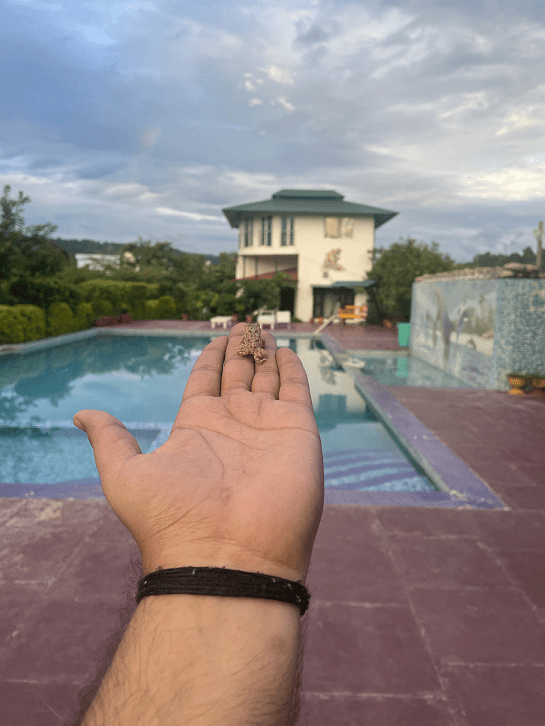
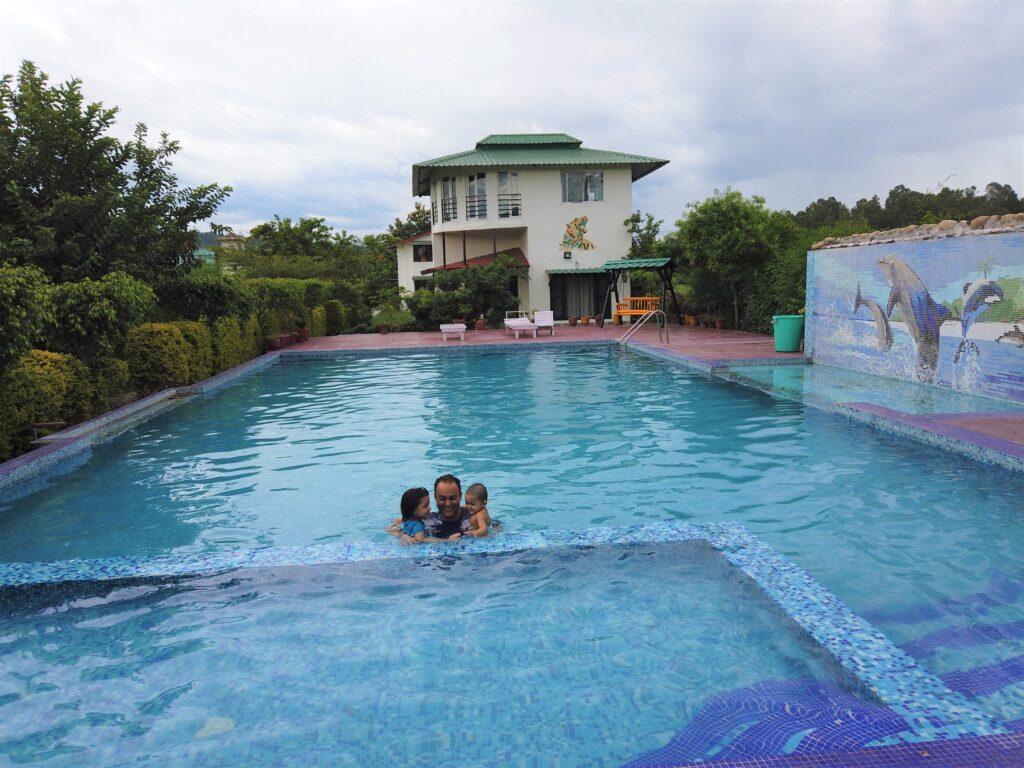
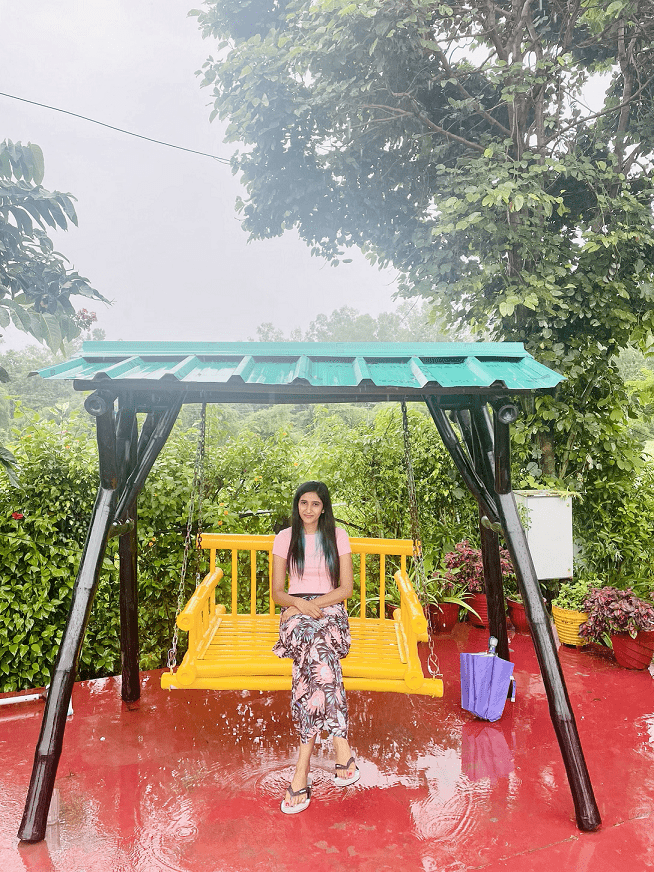
18th Sep 2022, Let’s enjoy the rain and visit Garjiya Devi temple
We woke up at around 7-8 am and it was drizzling, it’s good that we had dropped our safari plan, we had tea and coffee and it was 9 already so, we decided to have breakfast first because they serve breakfast till 10 am only.
From many more options, we had Idli, Chole Bhature, Upma and Sandwiches, so much in a single plate.
After this heavy brunch, now is the time for a pool party, we played pool ball and enjoyed ourselves there for two hours.
Then later on we decided to visit one of the famous temples and a Shaktipeeth, Garjiya Devi temple. It is situated over a large rock on the banks of the Kosi river.
As we entered the premises first we walked over a bridge from where we could see the wide, wildly flowing Kosi river. During monsoons, water flow is unpredictable so it is better to keep a safe distance from any water bodies.
There are steep stairs to the shrine, it was not much crowded when we visited so we did Darshans very peacefully. After taking blessings we clicked a few photos there and as we were about to leave it started pouring heavily, we took shelter under a shed of a shop and when it slowed down a bit we quickly rushed to the parking where our car was parked.
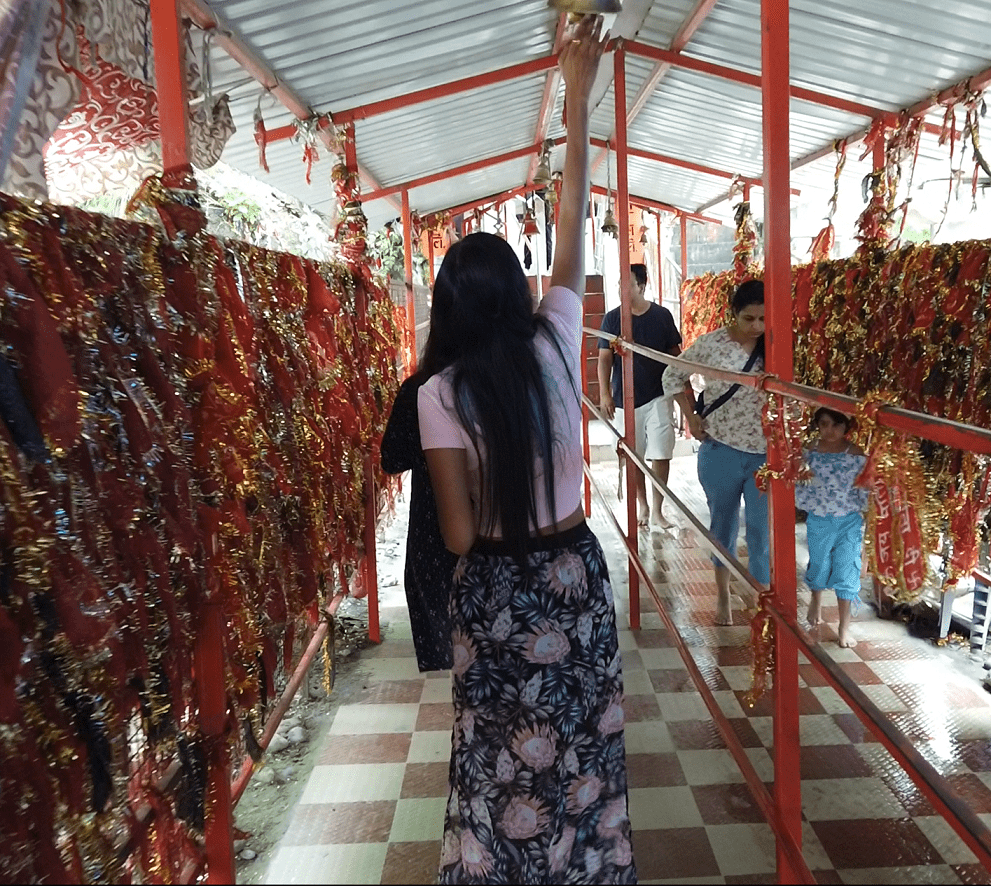
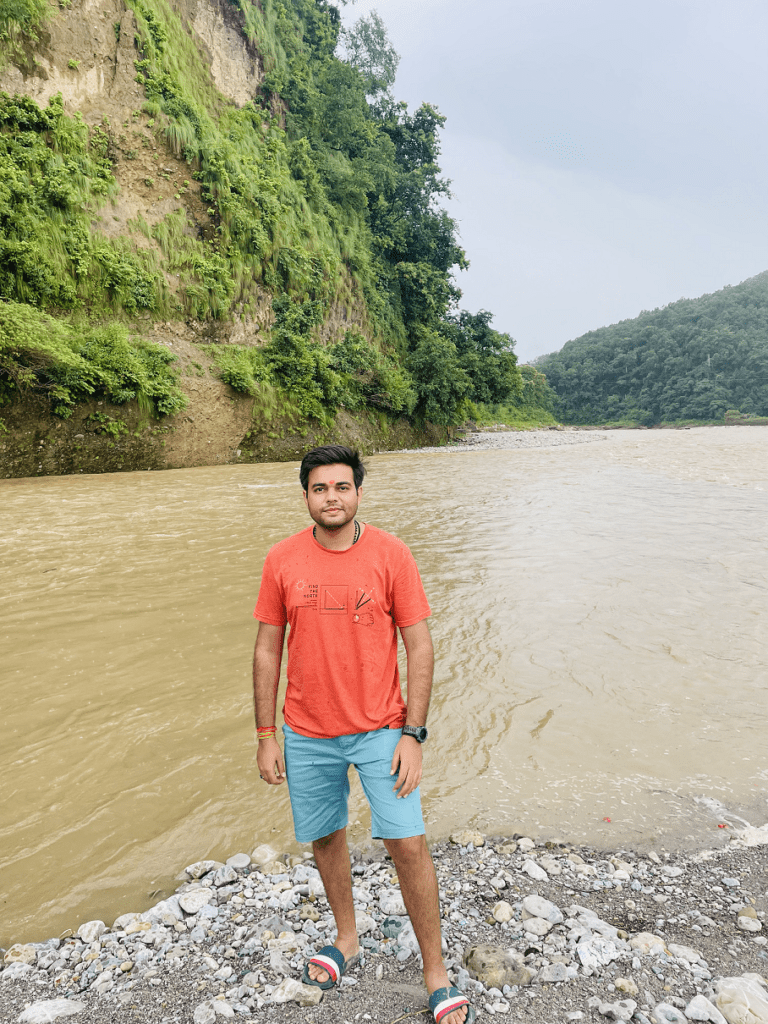
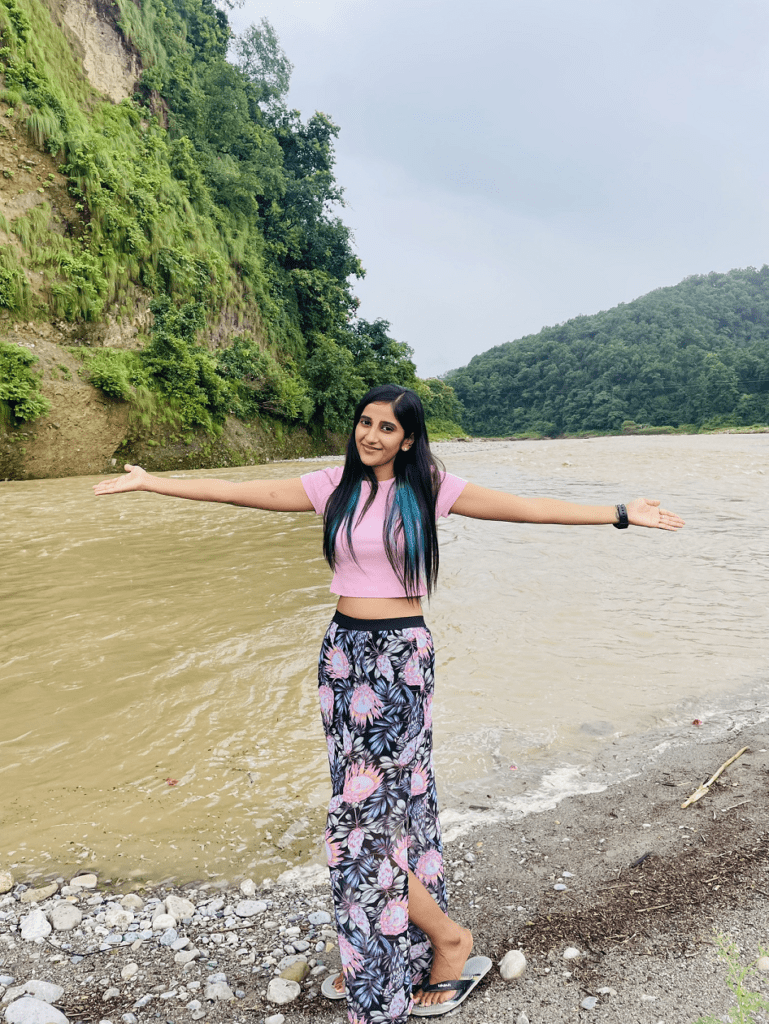
On our way back to the resort we stopped at a nice restaurant Village Vatika, the food there is as good as its cozy ambience. We had Nachos, Noodles, Pizza, Pasta, Chocolate milkshakes and cold Coffee there.
This is highly recommended by us, you can add it to your go-to places if you are planning a visit soon. Your taste buds will definitely find it worth going.
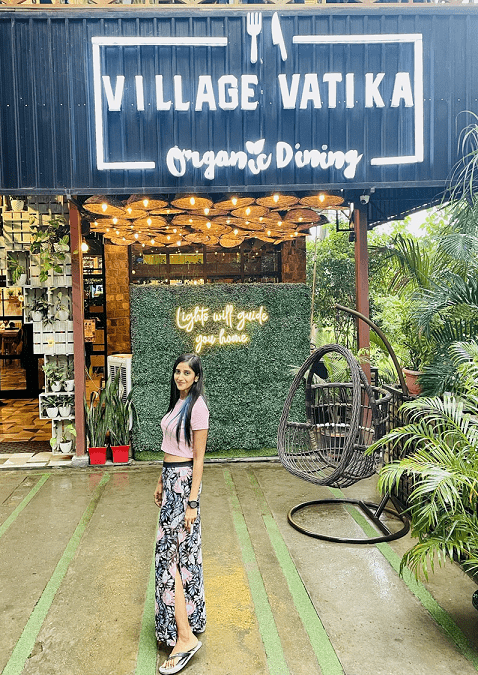
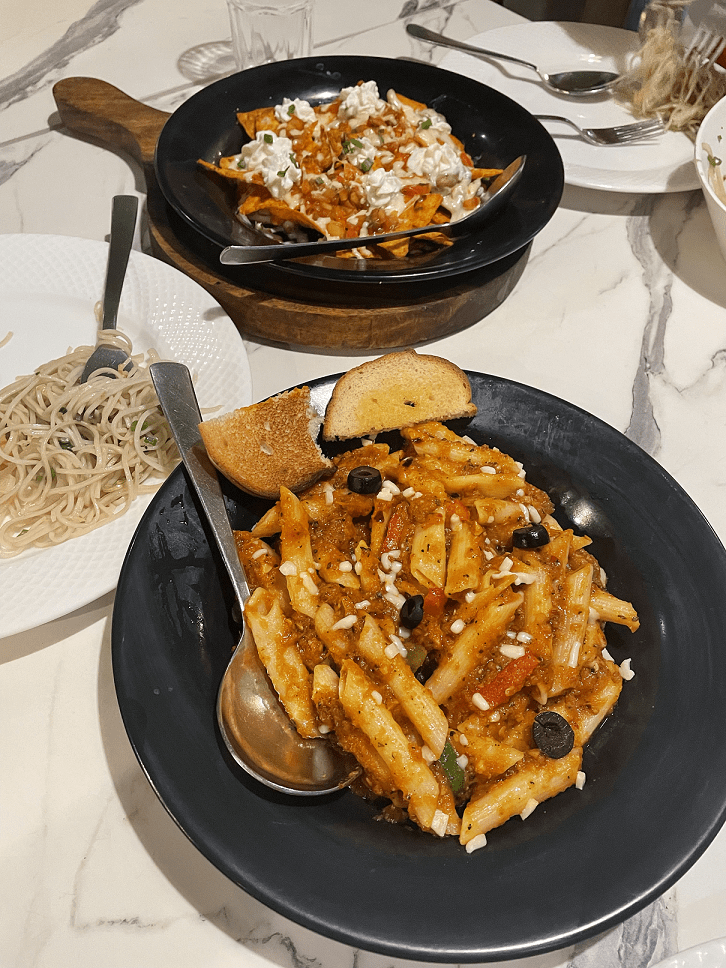
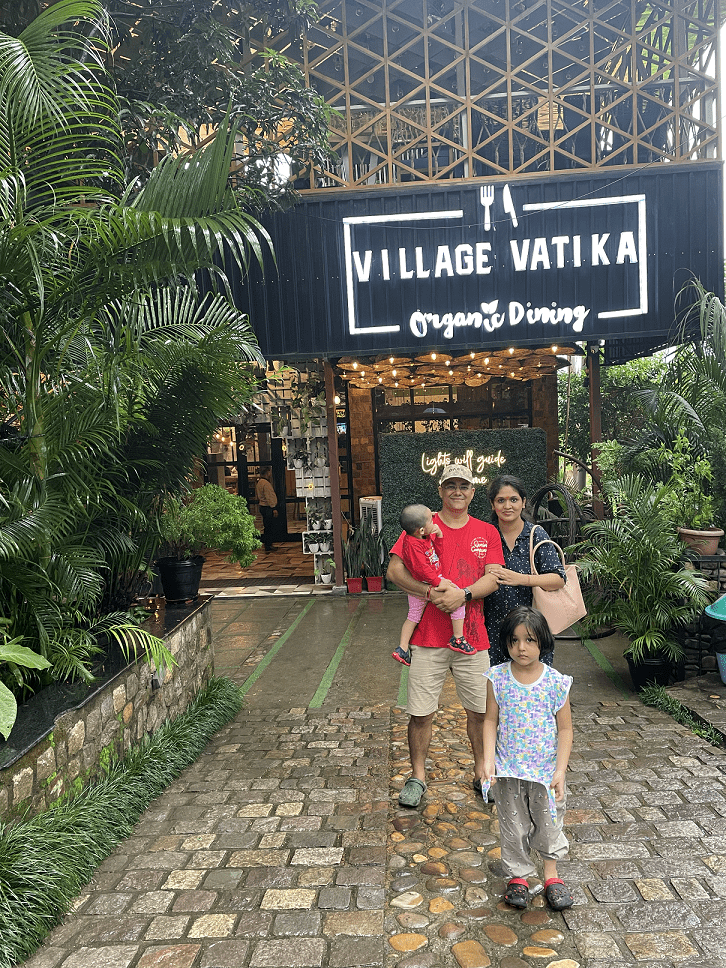
At around 6:30 pm we came back and had tea, then at dinner time we booked our safari in Phato zone for the early morning from the reception. It cost us Rs. 5500 which includes the permit fees, ranger fees and conveyance charges.
19th Sep 2022, Safari – In Search Of Jim Corbett Glory
We woke up at 4:30 am and at sharp 5:30 am we started our journey to take a glimpse of the big cat. As we entered the jungle we saw a lot of Spotted deer and with hope, we continued but no luck so far.
I’m not sure how far we went inside the jungle but it was not more than 5 km and then we returned to a forest rest house with a tree house on the premises as accommodation for tourists and that’s it.
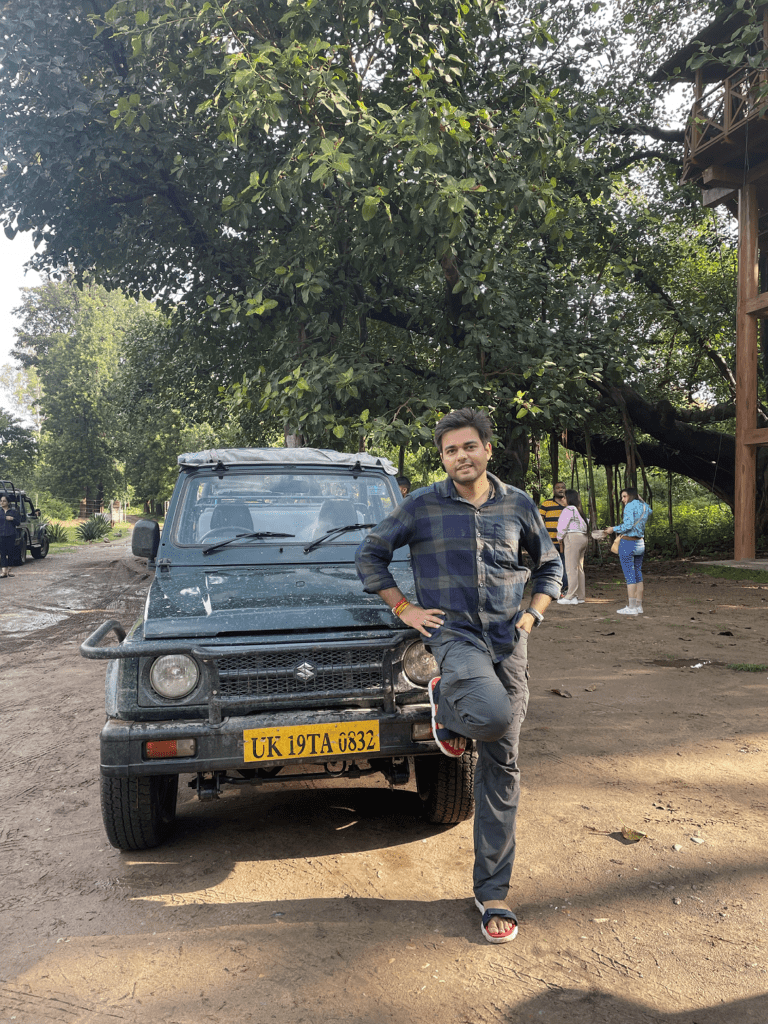
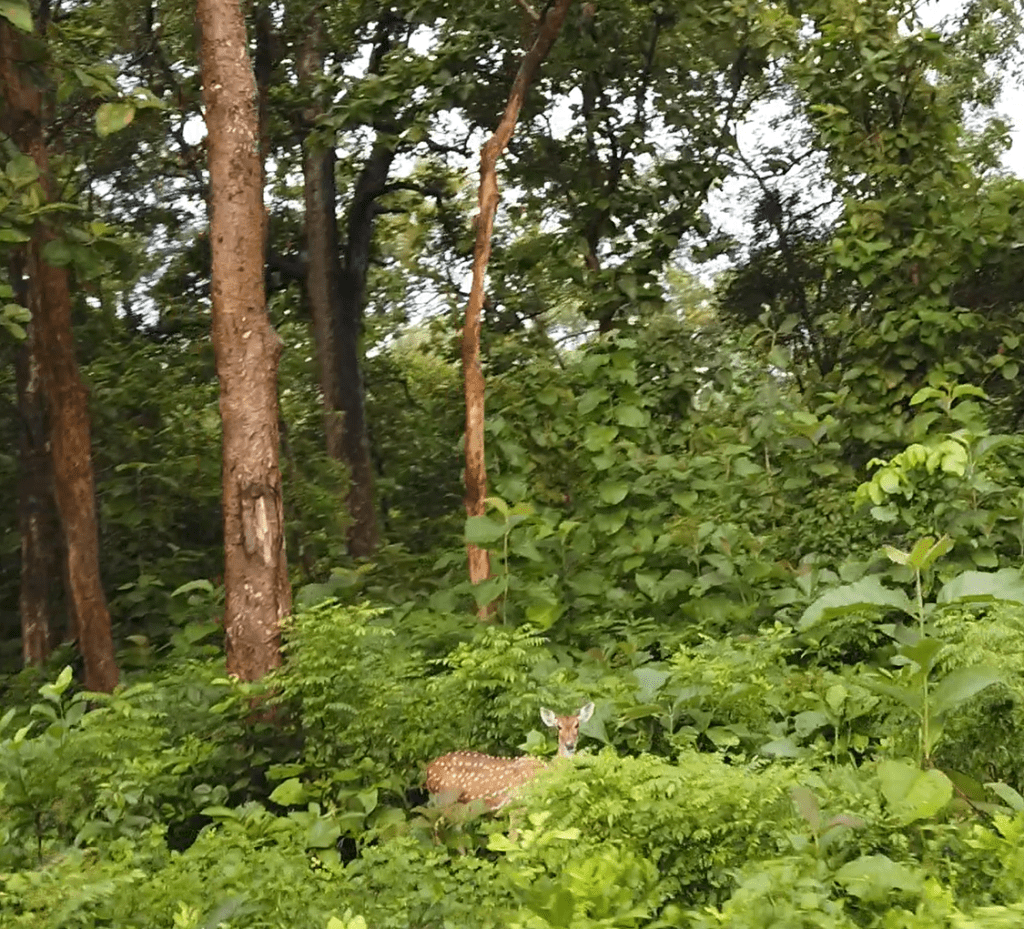
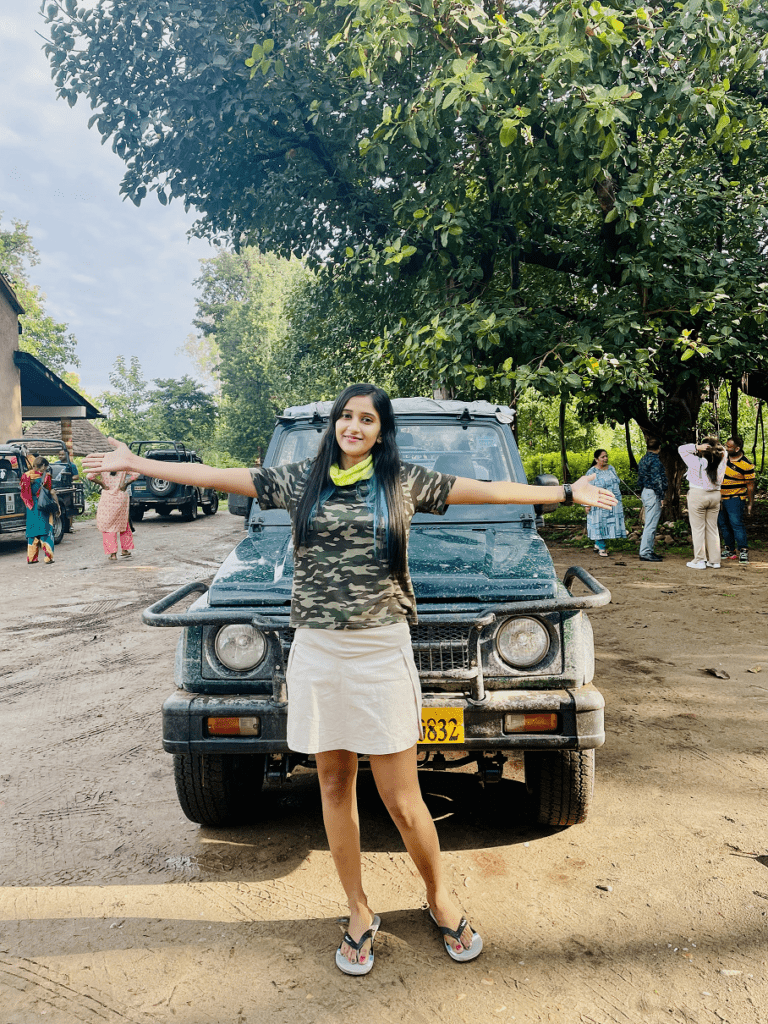
It is said that the Phato zone is the largest and densest among all the zones for safari but frankly speaking, we along with other tourists didn’t find it as what is documented and written on the websites.
Maybe we got tricked or due to the monsoon, the complete zone was not opened. But we were not informed of the complete scenario either by the resort or by the forest ranger.
So that was our two days trip to the Jim Corbett National Park.
While writing this blog, we did some online research that may help you plan your successful trip.
Safari Booking- Cost & Clause
You can book a jungle safari online from Uttarkhand Government’s official website https://www.corbettonline.uk.gov.in
Daily 80 jeeps are allowed 40 in the morning and 40 in the evening, so you need to plan it if you want a specific zone of your choice.
If you book from your resort then it may cost a bit higher but you will get a pick-up and drop facility from your stay itself.
If by any chance your safari gets cancelled then you’ll get a refund excluding permit charges which is Rs. 1200 per jeep.
For a different experience, you can also book your stay at forest rest houses. For charges and type of accommodation please visit their official site https://www.corbettonline.uk.gov.in/crbt_overnightsatey.aspx
The steps and required documents for online booking are mentioned on the site.
*Phato zone is not yet open for online bookings. Safari in this zone can be booked from your resort or from the forest department’s office.
Let’s Look At The Numbers
Jim Corbett National Park has a total of 252 tigers. It is at the top of all the National Parks with 14 Tigers per square km.
After reading various online sites and blogs I found that everyone recognizes the Dhikala zone as the best for tiger sightings after that Bijrani, Jhirna, Dhela, Durga Devi and then Sitabani. Phato zone is the newest, so data and reviews are not available for that but our experience we have already shared.
Below is the rough graphical representation of the sightings, it clearly justifies the order of preferences of the zones.
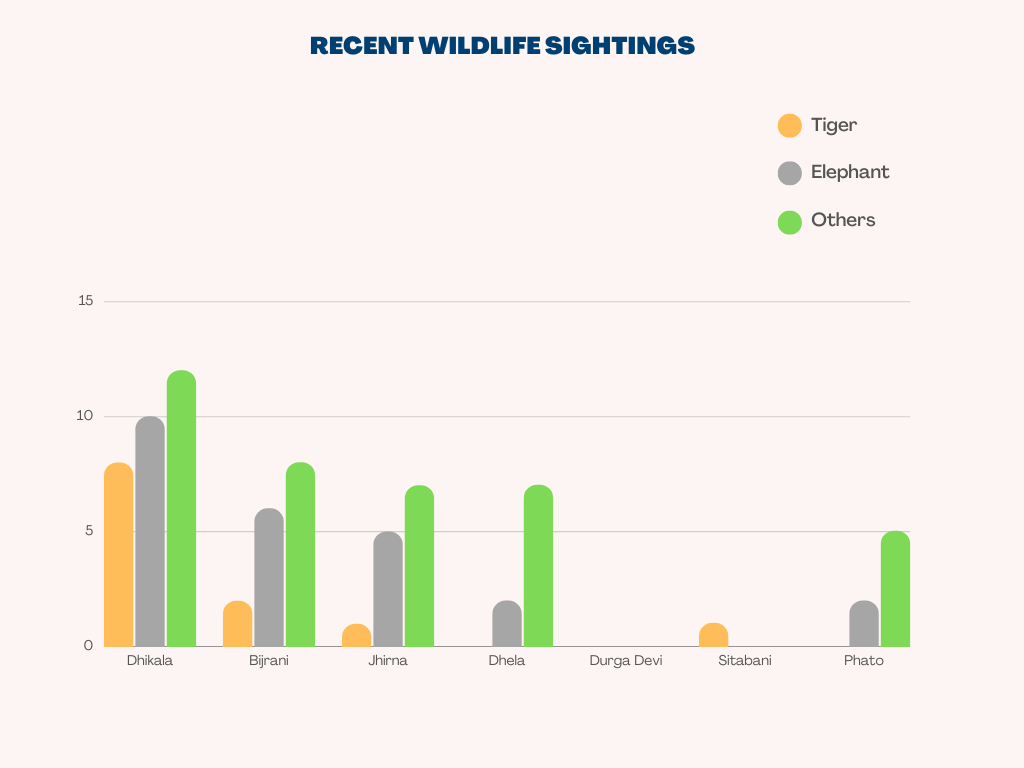
*This data is gathered from various social networking sites and recent youtube videos of the Jim Corbett National Park.
Best Time To Visit Jim Corbett National Park
The park remains open throughout the year but not all the zones, so let’s understand the 3 distinct seasons and timings for the opening of the different zones.
Winter from November to February, summer from March to June and Monsoon from July to October.
The best time to visit is definitely after mid-November to mid-June, as the famous and most preferred Dhikala zone opens during this time only.
Bijrani zone opens for visitors in mid-October, the possibility of Tiger sighting here is also expected, after the heavy rains wildlife comes out for basking and roams freely in the park.
Jhirna, Sitabani & Phato zones remain open throughout the year but it is not recommended to visit in July, August & September. This is the peak monsoon season and wildlife during this season is hard to watch.
Below are the opening & closing timings for all the zones.
| Zone | Opening Month | Closing Month |
| Dhikala | Mid-November | Mid-June |
| Bijrani | October | June |
| Jhirna | Throughout the year | |
| Dhela | Throughout the year | |
| Durga Devi | Mid-November | Mid-June |
| Sitabani | Throughout the year | |
| Phato | Throughout the year |
If you find this blog informative or have any suggestion/contribution to make, then please drop a comment below or you can DM me on Instagram


4 comments
Doing a great job for some one who are planning for trip. Please keep on doing the same. Good luck🤞
Thanks a lot, glad you liked it. Surely we’ll keep sharing the experiences.
Very well written and put together your experiences. This will certainly help and plan things better.
Keep up the good work..!!
Many thanks, wish we had done this research before our trip.😅